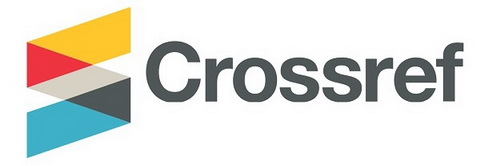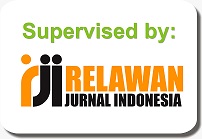PERAN USER GENERATED CONTENT (UGC) INSTAGRAM PADA INDUSTRI MAKANAN
Abstract
Participatory web era allows more social media users’ contribution to virtual communities, including creating User-Generated Content (UGC) for information sharing and communicating with other users. Awareness and informing concepts are brought by UGC content through discussion and/or posts can. In the food industry, UGC can act as Electronic-Word of Mouth with contributions and creations which are produced by users. Information about the function of organic information. Food industry players such as the Indomie brand see the opportunity to use UGC as an initial step for Electronic Word of Mouth in achieving its audience awareness goals. Using the phenomenological method, this qualitative study conducted data mining through informants who were directly involved in the UGC-based campaign on Indomie HypeAbis Chitato Taste of Roast Beef. Data shows sending trial products can build E-WOM organically and elevate share of voice through UGC that produced by Indomielovers. Strong UGC also needs to be supported by strong branding and motivation from users' prestige towards food trends to get recognition in the virtual community.
Keywords
Full Text:
PDFReferences
Blackshaw, P., & Nazzaro, M. (2006). Consumer-Generated Media ( CGM ) 101 Word-of-Mouth in the Age of the Web-Fortified Consumer. Nielsen BuzzMetrics White Paper, 1–13.
Clarke, V. and Braun, V. (2013) Successful qualitative research: A practical guide for beginners. London: Sage. ISBN 9781847875815
Creswell, J. W. (2013). Data Analysis Workshop. Research Design qualitative quantitative and mixed methods approaches, 1(9), 270. https://doi.org/10.1017/CBO9781107415324.004
Dahlander, L., Frederiksen, L., & Rullani, F. (2008). Online communities and open innovation: Governance and symbolic value creation. Industry and Innovation, 15(2), 115–123. https://doi.org/10.1080/13662710801970076
Daugherty, T., Eastin, M. S., & Bright, L. (2008). Exploring Consumer Motivations for Creating User-Generated Content. Journal of Interactive Advertising, 8(2), 16–25. https://doi.org/10.1080/15252019.2008.10722139
Delafrooz, N., Rahmati, Y., & Abdi, M. (2019). The influence of electronic word of mouth on Instagram users: An emphasis on consumer socialization framework. Cogent Business and Management, 6(1), 1–14. https://doi.org/10.1080/23311975.2019.1606973
Ekhlassi, A., Nezhad, M. H., Far, S. A., & Rahmani, K. (2012). The relationship between brand personality and customer personality, gender and income: A case study of the cell phone market in Iran. Journal of Targeting, Measurement and Analysis for Marketing, 20(3–4), 158–171. https://doi.org/10.1057/jt.2012.12
Germon, R., Sokolova, K., & Bami, A. (2017). Analyzing User Generated Content on Instagram: the Case of Travel Agencies. PATTERNS 2017: The Ninth International Conference on Pervasive Patterns and Applications, c, 78–81
Grid. (2019, May 21). Terungkap Kado Spesial dari Indomie untuk Ulang Tahun Chitato ke-30 Tahun. https://www.grid.id/read/041733281/terungkap-kado-spesial-dari-indomie-untuk-ulang-tahun-chitato-ke-30-tahun?page=2.
Hennig-Thurau, T., & Walsh, G. (2003). Electronic word-of-mouth: Motives for and consequences of reading customer articulations on the internet. International Journal of Electronic Commerce, 8(2), 51–74. https://doi.org/10.1080/10864415.2003.11044293
Hsiao, T. T., & Chuang, S. T. (2009). The role of virtual community in disseminating electronic word of mouth. 2009 Joint Conferences on Pervasive Computing, JCPC 2009, 755–760. https://doi.org/10.1109/JCPC.2009.5420083
IAB. (2008). IAB Platform Status Report: User Generated Content, Social Media, and Advertising [An Overview].
Ingrosso, L., Schmidt, T., Sherally, J., Dembech, M., Montes, S. B., Machado, R. S., … Severoni, S. (2015). A desk review on institutional and non-institutional organizations active in the field of migrant’s health in the WHO European Region. Ann Ist Super Sanità, 47(4), 313–320. https://doi.org/10.4415/ANN
Kumparan (2019, December 13). Jadi Mi Terenak di Dunia, Ini 4 Alasan Indomie Disukai Banyak Orang. https://kumparan.com/kumparanfood/jadi-mi-terenak-di-dunia-ini-4-alasan-indomie-disukai-banyak-orang-1sR1nQJ3wnF
Kaplan, A. M., & Haenlein, M. (2010). Users of the world, unite! The challenges and opportunities of Social Media. Business Horizons, 53(1), 59–68. https://doi.org/10.1016/j.bushor.2009.09.003
Kaufmann, K., & Peil, C. (2020). The mobile instant messaging interview (MIMI): Using WhatsApp to enhance self-reporting and explore media usage in situ. Mobile Media and Communication, 8(2), 229–246. https://doi.org/10.1177/2050157919852392
Khajuria, I. (2017). A Study of User-Generated Content on Social Networking Sitesand its Impact on Consumer-Based Brand Equity Constructs. 17(1).
Kumparan. (2019). Jadi Mi Terenak di Dunia, Ini 4 Alasan Indomie Disukai Banyak Orang. Kumparan. https://kumparan.com/kumparanfood/jadi-mi-terenak-di-dunia-ini-4-alasan- indomie-disukai-banyak-orang-1sR1nQJ3wnF
Laestadius, L. I., & Wahl, M. M. (2017). Mobilizing social media users to become advertisers: Corporate hashtag campaigns as a public health concern. Digital Health, 3, 205520761771080. https://doi.org/10.1177/2055207617710802
LA Times (2019, November 5) The official instant ramen power rankings. https://www.latimes.com/food/story/2019-11-05/instant-ramen-power-rankings-lucas-peterson
Lin, H. C., & Chang, C. M. (2018). What motivates health information exchange in social media? The roles of the social cognitive theory and perceived interactivity. Information and Management, 55(6), 771–780. https://doi.org/10.1016/j.im.2018.03.006
Lobato, R., Thomas, J., & Hunter, D. (2012). Histories of user-generated content: Between formal and informal media economies. Amateur Media: Social, Cultural and Legal Perspectives, 5, 3–17. https://doi.org/10.4324/9780203112021
Malthouse, E. C., Calder, B. J., Kim, S. J., & Vandenbosch, M. (2016). Evidence that user-generated content that produces engagement increases purchase behaviours. Journal of Marketing Management, 32(5–6), 427–444. https://doi.org/10.1080/0267257X.2016.1148066
Mix (2017) INDOMIE, THE FIRST INDONESIA’s BRAND IN TOP-10 GLOBAL BRAND. https://mix.co.id/marcomm/brand-communication/indomie-first-indonesian-brand-top-10-global-brand/
Mohammad, J., Quoquab, F., Thurasamy, R., & Alolayyan, M. N. (2020). The Effect of User-Generated Content Quality on Brand Engagement: The Mediating Role of Functional and Emotional Values. Journal of Electronic Commerce Research, 21(1), 39.
Moleong, L. (2001) Metode Penelitian Kualitatif. Bandung; Remaja Rosdakarya
Muntinga, D. G., Moorman, M., & Smit, E. G. (2011). Introducing COBRAs: Exploring motivations for Brand-Related social media use. International Journal of Advertising, 30(1). https://doi.org/10.2501/IJA-30-1-013-046
Mustonen, P. (2009). Social Media a New Way To Success. http://info.tse.fi/julkaisut/kr/Kre1_2009.pdf
NapoleonCat (2020, January 16). Instagram users in Indonesia - January 2020 https://napoleoncat.com/stats/instagram-users-in-indonesia/2020/01
NapoleonCat (2020, January 16). Instagram users in Indonesia - January 2020 https://napoleoncat.com/stats/instagram-users-in-indonesia/2020/01
O’Hern, M. S., & Kahle, L. R. (2013). The Empowered Customer: User-Generated Content and the Future of Marketing. Global Economics and Management Review, 18(1), 22–30. https://doi.org/10.1016/s2340-1540(13)70004-5
Organisation for Economic Co-operation and Development . (2007). Participative Web and User-Created Content. DIRECTORATE FOR SCIENCE, TECHNOLOGY AND INDUSTRY COMMITTEE FOR INFORMATION, COMPUTER AND COMMUNICATIONS POLICY , 1–66. https://doi.org/10.1787/9789264037472-en
Panahi, Sirous, Watson, Jason, & Partridge, Helen (2012) Social media and tacit knowledge sharing: Developing a conceptual model. World Academy of Science, Engineering and Technology, 64, pp. 1095-1102.
Przybylski, A. K., Murayama, K., Dehaan, C. R., & Gladwell, V. (2013). Motivational, emotional, and behavioral correlates of fear of missing out. Computers in Human Behavior, 29(4), 1841–1848. https://doi.org/10.1016/j.chb.2013.02.014
Rayinda, M. A. (2019). Pengaruh User Generated Content Terhadap Perilaku Para Foodie Pengguna Media Sosial. Jurnal Komunikasi Dan Kajian Media, 3(2), 116–127. http://jurnal.untidar.ac.id/index.php/komunikasi/article/viewFile/1257/1117
Rensink, J. . (Maarten). (2013). What motivates people to write online reviews and which role does personality play ? July.
Sawhney, M., Verona, G., & Prandelli, E. (2005). Collaborating to create: The internet as a platform for customer engagement in product innovation. Journal of Interactive Marketing, 19(4), 4–17. https://doi.org/10.1002/dir.20046
Stevanov, B., Gračanin, D., Suzić, N., & Tešić, Z. (2017). Visibility of Industry 4.0 on social networks. XVII International Scientific Conference on Industrial Systems (IS’17), 1, 78–83.
Svensson, A. E. C. (2011). FACEBOOK – the Social Newspaper that Never Sleeps. Master Degree, 2–16.
Tham, A., Croy, G., & Mair, J. (2013). Social Media in Destination Choice: Distinctive Electronic Word-of-Mouth Dimensions. Journal of Travel and Tourism Marketing, 30(1–2), 144–155. https://doi.org/10.1080/10548408.2013.751272
Tirto. (2019, February 4). Indomie HypeAbis, Pemasaran Kekinian untuk Generasi Kiwari - Tirto.ID. https://tirto.id/indomie-hypeabis-pemasaran-kekinian-untuk-generasi-kiwari-dfSF
Wang, Y., & Rodgers, S. (2010). Electronic word of mouth and consumer generated content: From concept to application. Handbook of Research on Digital Media and Advertising: User Generated Content Consumption, January 2015, 212–231. https://doi.org/10.4018/978-1-60566-792-8.ch011
Yang, H.-P. (Sophie), & Mutum, D. S. (2015). Electronic Word-of-Mouth for University Selection. In Journal of General Management (Vol. 40, Nomor 4, hal. 23–44). https://doi.org/10.1177/030630701504000403
Yap, K. B., Soetarto, B., & Sweeney, J. C. (2013). The relationship between electronic word-of-mouth motivations and message characteristics: The sender’s perspective. Australasian Marketing Journal, 21(1), 66–74. https://doi.org/10.1016/j.ausmj.2012.09.001
DOI: https://doi.org/10.32528/mdk.v4i1.3569
Copyright (c) 2020 MEDIAKOM

This work is licensed under a Creative Commons Attribution-NonCommercial-ShareAlike 4.0 International License.








